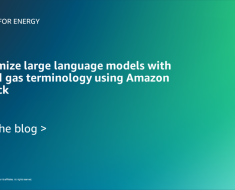About the author: Tomas Corza is a marketing strategist, Jobs to be Done practitioner and musician.
Click here to contact Tomas Corza.
Imagine computers that can think, learn, and reason like humans. This isn’t a distant dream — it’s the emerging reality of Artificial General Intelligence (AGI). Unlike traditional AI, which is tailored for specific tasks, AGI is designed to think, understand, learn, and apply knowledge in various scenarios. Kinda like a human but better.
From the (Jobs to Be Done) JTBD theory perspective, AGI isn’t just about making smarter machines; it’s about solving deeper, more complex problems that people face across industries. The job that AGI is designed to do is to think independently, solve complex problems, and adapt to new challenges — just like a human would but better. This capability makes AGI a transformative force, poised to revolutionize industries, fuel innovation, and redefine how technology interacts with humans.
In this piece, I’ll break down what AGI truly is, how it stands apart from the AI we’re accustomed to, different paths toward its development, and the hurdles that stand in the way. By understanding these elements, we’ll better understand the impact AGI will have on the jobs we need to get done in the future.
What is AGI?
AGI, or Artificial General Intelligence, refers to an advanced form of AI that can understand, learn, and apply knowledge across a wide array of tasks, like humans but better. Unlike narrow AI, which is crafted to excel in specific areas, AGI is designed to demonstrate general cognitive abilities, allowing it to tackle new problems and adapt to new environments without additional prompting.
Click here to sign up for my newsletter
Subscribers receive my monthly newsletter, filled with the latest AI and marketing news, valuable resources, and comprehensive guides.
From a JTBD perspective, AGI’s job is to eliminate the barriers of narrowly focused AI by providing a versatile, adaptive intelligence that can be applied wherever there’s a need for deep cognitive abilities. It aims to take on tasks that currently require human intelligence, doing the work of reasoning, problem-solving, and learning in new situations, independently.
AGI vs. Narrow AI
To understand AGI better, it’s important to compare it to narrow AI, also known as Narrow Artificial Intelligence (NAI). NAI is designed for specific tasks, such as:
- Speech Recognition: Think of Siri or Google Assistant, which can recognize and process spoken language.
- Image Recognition: This includes medical imaging applications or facial recognition systems.
- Recommendation Systems: Algorithms used by platforms like Netflix or Amazon to suggest content based on user preferences.
The key differences between AGI and NAI are:
- Scope of Functionality: NAI is limited to specific tasks, while AGI can handle a wide range of activities, akin to human intelligence.
- Adaptability: NAI needs specific programming for each task, whereas AGI can adapt autonomously to new tasks and environments.
- Cognitive Abilities: AGI aims to replicate human-like learning, reasoning, and problem solving abilities that NAI doesn’t possess.
Key Characteristics of AGI
Versatility: AGI stands out for its ability to switch between tasks seamlessly. Unlike narrow AI, which is confined to specific functions, AGI can handle a wide variety of activities. This makes it a powerful tool that can be applied across numerous domains.
Learning and Adaptation: AGI systems learn from their experiences and adapt accordingly. This continuous learning process enables AGI to improve and tackle new challenges effectively, refining its understanding and approach over time.
Reasoning and Problem-Solving: AGI applies logical reasoning to solve problems in unfamiliar situations, making informed decisions without needing human intervention.
Autonomy: AGI operates independently, managing processes like data gathering, decision-making, and execution without constant human oversight. This autonomy allows humans to focus on more strategic and creative tasks.
Theoretical Approaches to AGI
Symbolic AI: This approach, also known as classical AI, is based on the idea that human intelligence can be replicated through symbols and logic-based rules. It excels in explainability and precision but struggles with adaptability and flexibility.
Connectionist Approaches (Neural Networks): Inspired by the human brain, neural networks learn from data and are highly effective for tasks like image recognition and natural language understanding. However, they often operate as a “black box,” making it difficult to interpret their decision-making process.
Hybrid Models: These combine symbolic AI and neural networks, aiming to leverage the strengths of both. Hybrid models offer enhanced flexibility and explainability but come with challenges in complexity and resource intensity.
Challenges in Developing AGI
Scalability: Creating AGI that can scale effectively without losing performance is a significant challenge. This involves developing architectures that can grow and adapt efficiently.
Learning and Generalization: AGI must learn from diverse experiences and apply this knowledge to new situations. Developing algorithms that can generalize from limited data and transfer knowledge across domains remains a major hurdle.
Robustness and Reliability: AGI systems need to function correctly in various environments, handling unexpected inputs and recovering from errors. Ensuring robustness involves rigorous testing and developing fail-safes.
Ethical and Social Challenges
Bias and Fairness: AGI could perpetuate biases present in training data, leading to unfair outcomes. Addressing this requires careful data collection and model evaluation to ensure fairness.
Privacy and Security: AGI’s access to vast amounts of data raises concerns about privacy and security. Ensuring robust encryption and ethical data use is essential.
Impact on Employment: AGI could displace jobs, particularly those that can be easily automated. Managing this transition involves investing in education and supporting affected workers.
Future Prospects and Implications of AGI
Innovation and Discovery: AGI could accelerate breakthroughs in fields like medicine, environmental science, and engineering by processing vast amounts of data and identifying patterns that might be missed by humans.
Economic Growth: AGI can drive economic growth by automating tasks, enhancing productivity, and creating new markets and industries.
Enhanced Decision-Making: AGI can transform decision-making processes by offering sophisticated analysis and predictions, improving the quality and effectiveness of decisions across various domains.
Risks and Mitigation
Control and Safety: Ensuring AGI systems remain under human control and operate safely is critical. This includes developing robust control mechanisms and ensuring AGI aligns with human values.
Ethical Considerations: Addressing ethical concerns like privacy, bias, and fairness is crucial. AGI systems must protect user data, operate transparently, and align with ethical frameworks.
Looking Ahead: The Future of AGI and the Jobs It Will Do
The journey toward AGI is one of the most ambitious and transformative endeavors in modern technology. AGI holds the potential to revolutionize how we solve problems and make decisions, offering new tools that could accelerate progress in numerous fields. As we develop AGI, we must ensure it aligns with human values, supports human goals, and is used for the benefit of all humans. The future of AGI is about more than just advanced machines — it’s about creating technology that gets the right jobs done for humanity.
Sources;
https://www.forbes.com/sites/bernardmarr/2024/05/20/the-crucial-difference-between-ai-and-agi/
https://www.microsoft.com/en-us/bing/do-more-with-ai/artificial-general-intelligence?form=MA13KP





